Description
The instruction for medical use of LISINOPRIL medicine the Trade name Lisinopril the International unlicensed name Lisinopril Dosage Form of the Tablet of 5 mg, 10 mg, 20 mg One tablet contains Structure: active agent: lisinopril a dihydrate (in terms of lisinopril) – 5 mg, 10 mg, 20 mg. excipients: Mannitolum, starch corn, calcium phosphate dihydrate, povidone, croscarmellose sodium, magnesium stearate. The description of the Tablet of white or almost white color of a ploskotsilindrichesky form, a dosage of 5 mg, 10 mg – with a facet, a dosage of 20 mg – with a facet and risky. Easy marbling is allowed. Pharmacotherapeutic group Enzyme Angiotensin-converting (EAC) inhibitors. AKF inhibitors. Lisinopril. The ATX C09AA03 code the Pharmacological Pharmacokinetics Later properties of administration of drug inside about 25% of lisinopril is soaked up from digestive tract. Meal does not influence drug absorption. Absorption averages 30%, bioavailability – 29%. Almost does not contact proteins of blood plasma. The maximum concentration in blood plasma (90 ng/ml) is reached in 7 hours. Permeability through a blood-brain and placental barrier low. Lisinopril does not biotransformirutsya in an organism. It is removed by kidneys in not changed look. Elimination half-life makes 12 hours. At patients with chronic heart failure the absorption and clearance of lisinopril are reduced. At patients with a renal failure the concentration of lisinopril several times exceeds concentration in blood plasma at volunteers, and increase in time of achievement of the maximum concentration in blood plasma and increase in elimination half-life is noted. Patients of advanced age have a concentration of drug in blood plasma and the area under a curve concentration time is twice more, than at patients of young age. The pharmacodynamics APF Inhibitor, reduces formation of II angiotensin of angiotensin I. Decrease in content of angiotensin II leads to direct reduction of discharge of Aldosteronum. Reduces degradation of bradykinin and increases synthesis of prostaglandins. Reduces the general peripheric vascular resistance, the arterial blood pressure (ABP), preloading, pressure in pulmonary capillaries, causes increase in minute volume of blood and increase in tolerance of a myocardium to loadings in patients with chronic heart failure. Expands arteries more than veins. Some effects are explained by impact on fabric system renin-angiotenzinovye. At prolonged use the hypertrophy of a myocardium and walls of arteries of resistive type decreases. Improves blood supply of an ischemic myocardium. APF inhibitors extend lifetime at patients with chronic heart failure, slow down progressing of dysfunction of a left ventricle at the patients who had a myocardial infarction without clinical manifestations of heart failure. The antihypertensive effect begins approximately in 6 hours and remains within 24 hours. Duration of effect depends also on dose size. The beginning of action – in 1 h. The maximum effect is defined in 6-7 hours. In arterial hypertension the effect is noted in the first days after an initiation of treatment, stable action develops in 1-2 months. At sharp drug withdrawal did not observe the significant increase in the ABP. Besides decrease in the ABP, lisinopril reduces an albuminuria. At patients with a hyperglycemia contributes to normalization of function of the injured glomerular endothelium. Lisinopril does not affect concentration of glucose in blood at patients with diabetes and does not lead to increase of cases of a hypoglycemia. Indications – arterial hypertension (in monotherapy or in a combination with other antihypertensive drugs) – chronic heart failure (as a part of combination therapy for treatment of the patients taking the drugs of a foxglove and/or diuretics) – an acute myocardial infarction (at patients with stable hemodynamic indicators in the first day) – a diabetic nephropathy (decrease in an albuminuria at insulin-dependent patients with the normal ABP and non-insulin-dependent patients with arterial hypertension) the Route of administration and doses Inside, irrespective of meal. In arterial hypertension the patient who is not receiving other antihypertensives appoint 5 mg of 1 times a day. In the absence of effect the dose is increased by each 2-3 days by 5 mg to an average therapeutic dose of 20-40 mg/days (increase in a dose usually does not lead over 40 mg/days to further decrease in the ABP). A usual daily maintenance dose – 20 mg. The maximum daily dose – 40 mg. The full effect develops usually in 2-4 weeks from an initiation of treatment that should be considered at increase in a dose. At insufficient clinical effect the combination of drug with other antihypertensives is possible. If the patient received preliminary treatment by diuretics, then intake of such drugs needs to be stopped in 2-3 days prior to Lisinopril use. If it is impracticable, then the initial dose of the drug Lisinopril should not exceed 5 mg a day. In this case after reception of the first dose the medical control within several hours (the maximum of action is reached approximately in 6 hours) as there can be a significant decrease in the ABP is recommended. In renovascular hypertensia or other states with superactivity renin-angiotensin-aldosteronovoy of a system it is reasonable to appoint also low initial dose – 2.5-5 mg (1/2 tablets on 5 mg – 1 tablet) in day, under the strengthened medical control (control of the ABP, function of kidneys, potassium level in blood serum). A maintenance dose, continuing stringent medical control, it is necessary to define depending on ABP loudspeakers. In a renal failure in view of the fact that lisinopril is emitted through kidneys, the initial dose has to be defined depending on clearance of creatinine. Further selection of doses should be made depending on individual reactions at regular control of function of kidneys, level of potassium, sodium in blood serum. Clearance of creatinine the Initial dose of ml/min. of mg/day 30-70 5-10 10-30 2,5-5 less than 10 2,5 (including and the patients subjected to treatment by a hemodialysis) In persistent arterial hypertension is shown long maintenance therapy on 10-15 mg/days. In chronic heart failure – begin with 2.5 mg (1/2 tablets on 5 mg) 1 time a day, with the subsequent increase in a dose by 2.5 mg in 3-5 days to the usual, supporting daily dose of 5-20 mg. The dose should not exceed 20 mg a day. At patients of advanced age more significant long hypotensive action that it is connected with reduction of clearance rate of lisinopril (it is recommended to begin treatment with 2.5 mg/days is often observed (1/2 tablets on 5 mg). An acute myocardial infarction (as a part of combination therapy) In the first day – 5 mg inside, then 5 mg in a day, 10 mg in two days and then 10 mg of 1 times a day. At patients with an acute myocardial infarction to use drug not less than 6 weeks. In an initiation of treatment or within the first 3 days after an acute myocardial infarction at patients with low systolic arterial blood pressure (120 mm Hg. or below) it is necessary to appoint a smaller dose – 2.5 mg (1/2 tablets on 5 mg). In case of decrease in the ABP (systolic arterial blood pressure is lower or 100 mm Hg are equal.), the daily dose in 5 mg can be lowered if necessary to 2.5 mg (1/2 tablets on 5 mg). In case of the long significant decrease in the ABP (systolic arterial blood pressure is lower than 90 mm Hg. more than 1 hour), it is necessary to stop drug treatment. The diabetic nephropathy At patients with insulin-dependent diabetes mellitus is applied by 10 mg of the drug Lisinopril of 1 Times a day. Lower than 75 mm Hg are possible to increase a dose, if necessary, to 20 mg of 1 times a day for the purpose of achievement of values of diastolic arterial blood pressure. in situation sitting. At patients with insulin-dependent diabetes mellitus the dosage same, for the purpose of achievement of values of diastolic arterial blood pressure is lower than 90 mm Hg. in situation sitting. Side effects Very often (≥ 10%) – dizziness, a headache, increased fatigue – dry cough – nausea, vomiting, diarrhea Often (≥ 1%,<, 10%) – the profound lowering of arterial pressure, a stethalgia – lability of mood, confusion of consciousness, confusion, paresthesias, drowsiness, convulsive twitchings of muscles of extremities and lips – a leukopenia, a neutropenia, an agranulocytosis, thrombocytopenia, anemia (decrease in hemoglobin, a hematocrit), positive takes of the test for antinuclear antibodies, increase in blood sedimentation rate, an eosinophilia, a leukocytosis – a hyperpotassemia, a hyponatremia – dispnoe, a bronchospasm – dryness in a mouth, anorexia, change of taste, an abdominal pain, dyspepsia, pancreatitis, hepatocellular or cholestatic jaundice, hepatitis – urticaria, the increased sweating, a skin itching, skin rashes, an alopecia, a photosensitization, a Quincke’s disease of the face, extremities, lips, language, an epiglottis, and/or a throat, fever – an oliguria, an anury, a proteinuria, uraemia, a renal failure, an acute renal failure – decrease in potency Is rare (≥ 0.01%,<, 0.1%) – orthostatic hypotension, heartbeat, tachycardia, bradycardia, aggravation of symptoms of heart failure, disturbance of atrioventricular conductivity, a myocardial infarction, a cerebrovascular stroke – an asthenic syndrome – arthralgia/arthritis, myalgia – increase in activity of hepatic enzymes, a hyperbilirubinemia – increase in level of urea and creatinine Very seldom (& lt, 0.01%) – an interstitial Quincke’s disease of the Contraindication – hypersensitivity to lisinopril or other AKF inhibitors, a Quincke’s disease in the anamnesis including from use of AKF inhibitors – a hereditary Quincke’s edema or idiopathic hypostasis – a bilateral stenosis of renal arteries – a stenosis of an artery of the only kidney with the progressing azotemia – a state after transplantation of kidneys – a renal failure – primary hyper aldosteronism – pregnancy and the period of a lactation – children’s and teenage age up to 18 years (the efficiency and safety are not established) With care should be applied at: an aortal stenosis / a hypertrophic cardiomyopathy, arterial hypotension, a hypoplasia of marrow, a hyponatremia (the increased risk of developing arterial hypotension at the patients who are on a low-salt or saltless diet), hypovolemic states (including diarrhea, vomiting), diseases of connective tissue (system lupus erythematosus, a scleroderma), diabetes, gout, a hyperuricemia, a hyperpotassemia, coronary heart disease, cerebrovascular diseases (including insufficiency of cerebral circulation), heavy chronic heart failure, a liver failure and at elderly people. Medicinal interactions At simultaneous use of drug with kaliysberegayushchy diuretics (Spironolactonum, Triamterenum, amiloride), potassium drugs, the salt substitutes containing potassium, cyclosporine, risk of development of a hyperpotassemia increases, especially at impaired renal function therefore it is possible to appoint them in common only at regular control of level of potassium in blood serum and function of kidneys. The combined use of lisinopril with beta blockers, the blockers of slow calcium channels (BSCC), diuretics, tricyclic antidepressants / neuroleptics and other antihypertensives enhances expressiveness of hypotensive action. Lisinopril slows down removal of drugs of lithium. Therefore at combined use it is regularly necessary to control concentration of lithium in blood serum. Antacids and Colestyraminum reduce absorption of lisinopril in digestive tract. At combined use with insulin and hypoglycemic means for intake the risk of development of a hypoglycemia is possible. Non-steroidal anti-inflammatory drugs (NPVP) (including selection inhibitors of cyclooxygenase-2 (TsOG-2)), are oestrogenic, adrenostimulyator reduce antigipertezionny effect of lisinopril. At simultaneous use of APF inhibitors and drugs of gold (sodium aurotiomalat) the symptom complex including hyperaemia of the person, nausea, vomiting and decrease in the ABP is described. At combined use with selective serotonin reuptake inhibitors can lead to the expressed hyponatremia. Combined use with Allopyrinolum, procaineamide, cytostatics can lead to a leukopenia. Special instructions Symptomatic hypotension Most often significant decrease in the ABP arises at decrease in the volume of the circulating blood (VCB), the caused therapy by diuretics, reduction of salt in food, dialysis, diarrhea or vomiting. At patients with chronic heart failure with a simultaneous renal failure or without it, perhaps significant decrease in the ABP. Under stringent control of the doctor it is necessary to appoint Lisinopril the patient with coronary heart disease, cerebrovascular insufficiency at whom sharp decrease in the ABP can lead to a myocardial infarction or to a stroke. Tranzitorny arterial hypotension is not a contraindication for reception of the following dose of drug. At Lisinopril use, at some patients with chronic heart failure, but with the normal or lowered arterial blood pressure, decrease in the ABP can be noted that usually is not the reason for the treatment termination. Prior to drug treatment, whenever possible, it is necessary to normalize the level of sodium and/or to fill OCK, to carefully control action of an initial dose of Lisinopril on the patient. In case of a stenosis of renal arteries (in particular in a bilateral stenosis, or in the presence of a stenosis of an artery of the only kidney) and also in a circulatory unefficiency owing to a lack of ions of sodium and/or liquid, use of Lisinopril can lead also to a renal failure, an acute renal failure which usually is irreversible after drug withdrawal. In an acute myocardial infarction the use of standard therapy Is shown (trombolitik, acetylsalicylic acid, beta blockers). It is possible to use lisinopril together with intravenous administration or using therapeutic transdermal systems of nitroglycerine. The renal failure At patients with chronic heart failure can lead the profound lowering of arterial pressure caused by AKF inhibitors to further deterioration in renal function. Cases of an acute renal failure are noted. Patients with a bilateral stenosis of renal arteries or a stenosis have arteries of the only kidney, receiving AKF inhibitors, increase in urea and creatinine in blood serum, usually reversible after the treatment termination was noted. Met at patients with a renal failure more often. Lisinopril is not applied in an acute heart attack at patients with the profound renal dysfunction established in change of concentration of creatinine of the serum exceeding 177 mmol/l and/or the proteinuria exceeding 500 mg/days. If renal dysfunction develops at drug use (concentration of creatinine of serum exceeds 265 mmol/l or values with indicators prior to treatment double), the doctor has to estimate need of further use of drug. Hypersensitivity / the Quincke’s disease the Quincke’s disease of the face, extremities, lips, language, an epiglottis and/or a throat was seldom noted at the patients accepting AKF inhibitors including lisinopril. This complication can arise during any period of treatment. In this case drug treatment needs to be stopped and established as soon as possible for the patient observation before full regression of symptoms. The state most often passes in cases when hypostasis arises only on a face and lips, without treatment, however prescribing of antihistamines is possible. The Quincke’s disease with a laryngeal edema can be fatal. Hypostasis of language, an epiglottis or a throat can be the cause of obstruction of airways therefore it is necessary to carry out immediately the corresponding therapy (0.3-0.5 ml 1:1000 solutions of epinephrine (adrenaline) subcutaneously) and/or measures for ensuring passability of airways. It is noted that at the patients of negroid race accepting inhibitors, the Quincke’s disease developed more often than at sick other races. At patients who in the anamnesis already had a Quincke’s disease which is not connected with treatment by AKF inhibitors the risk of its development can be increased during treatment by AKF inhibitor. Surgical intervention / the general anesthesia
At extensive surgical interventions and also at use of other means causing decrease in the ABP, lisinopril, blocking formation of angiotensin II, can cause expressed not predicted decrease in the ABP. At patients of advanced age the same dose results in higher concentration of drug in blood therefore the extra care when determining a dose is required. As it is impossible to exclude potential risk of developing of an agranulocytosis, periodic control of a picture of blood is required. At use of drug in the conditions of dialysis with polyacrylics-nitriles-membranes there can be an acute anaphylaxis therefore other type of a membrane for dialysis, or prescribing of other antihypertensive drugs is recommended or. Features of influence of medicine on ability to run the vehicle or potentially dangerous mechanisms Considering side effects of drug, it is necessary to be careful when driving or potentially dangerous mechanisms requiring special attention. Overdose Symptoms: the profound lowering of arterial pressure, dryness in a mouth, drowsiness, an urination delay, a constipation, concern, acrimony, a hyperpotassemia. Treatment: specific antidote is absent. Gastric lavage, use of enterosorbents and depletive. Intravenous administration of 0.9% of solution of sodium of chloride, in case of bradycardia, resistant to treatment, is shown, use of an artificial pacemaker is necessary. Control of the ABP, indicators of water and electrolytic balance is necessary. The hemodialysis is effective. A form of release and packing On 10 tablets in blister strip packaging from a film of the polyvinylchloride or import and printing aluminum foil varnished. 2 or 3 blister strip packagings together with the instruction for medical use in the state and Russian languages place in a pack from cardboard. To Store storage conditions in the dry, protected from light place at a temperature not over 25 ºС. To store out of children’s reach! 2 years not to apply a period of storage after an expiration date. Prescription status According to the prescription JSC Biokhimik Producer, Russian Federation, 430030, Saransk, Vasenko St. 15 A Ph./fax (8342) 47-36-48, 47-36-78. The owner of the registration certificate of JSC Biokhimik, the Russian Federation the Address of the organization accepting in the territory of the Republic of Kazakhstan claims from consumers on quality of products (goods): TsentrAziyaFarm LLP, 050030, Republic of Kazakhstan, Almaty, Suyunbaya Ave., 290
to Develop
Additional information
| Ingredient |
|---|





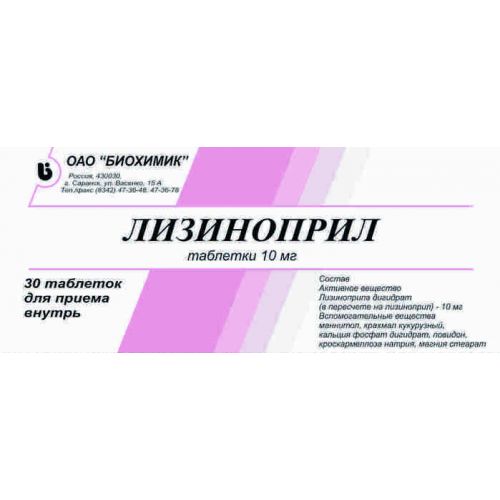
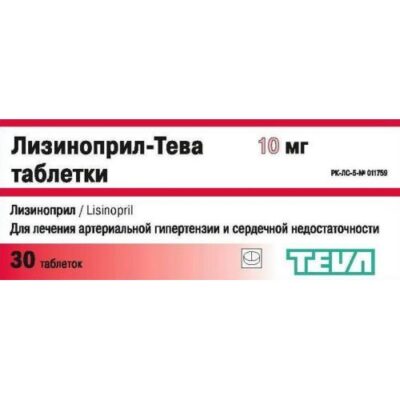
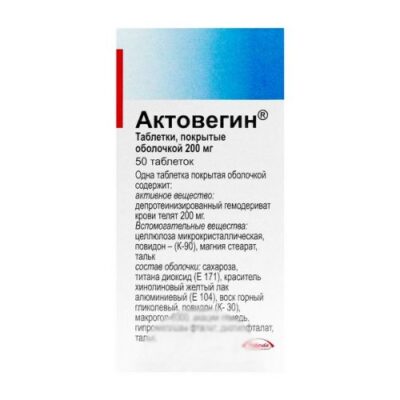
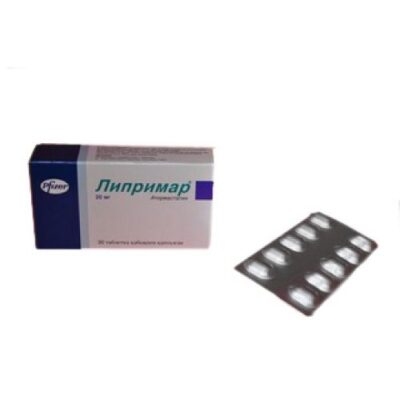
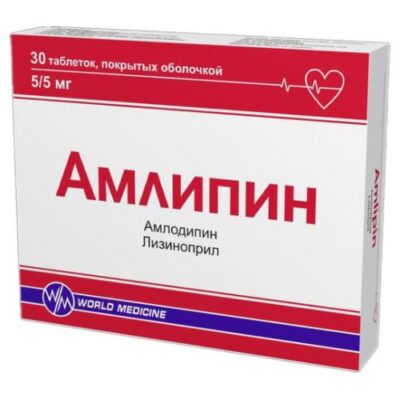
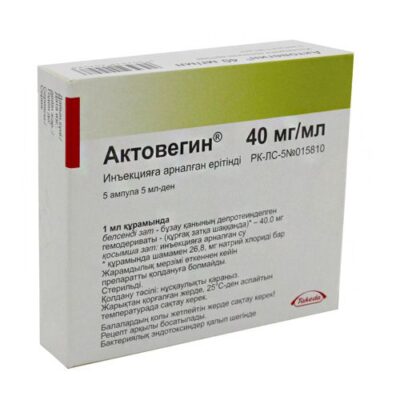
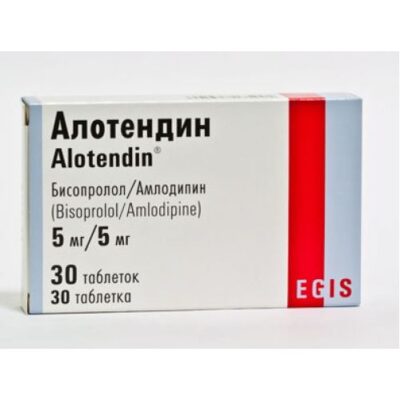
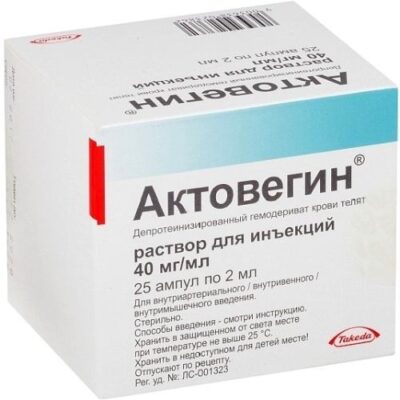
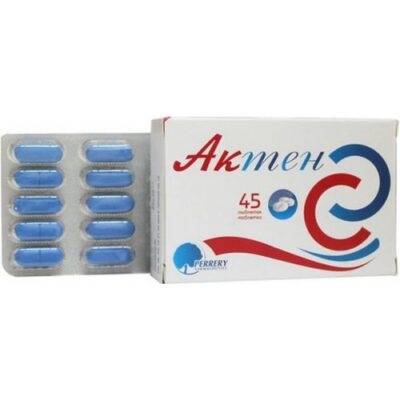
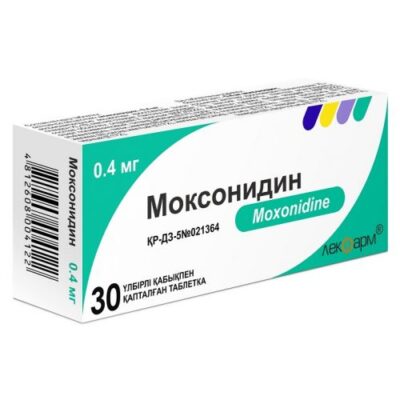
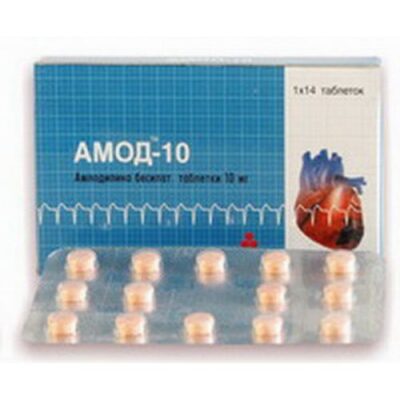
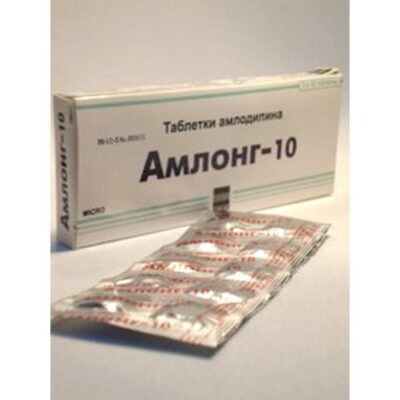






Reviews
There are no reviews yet.